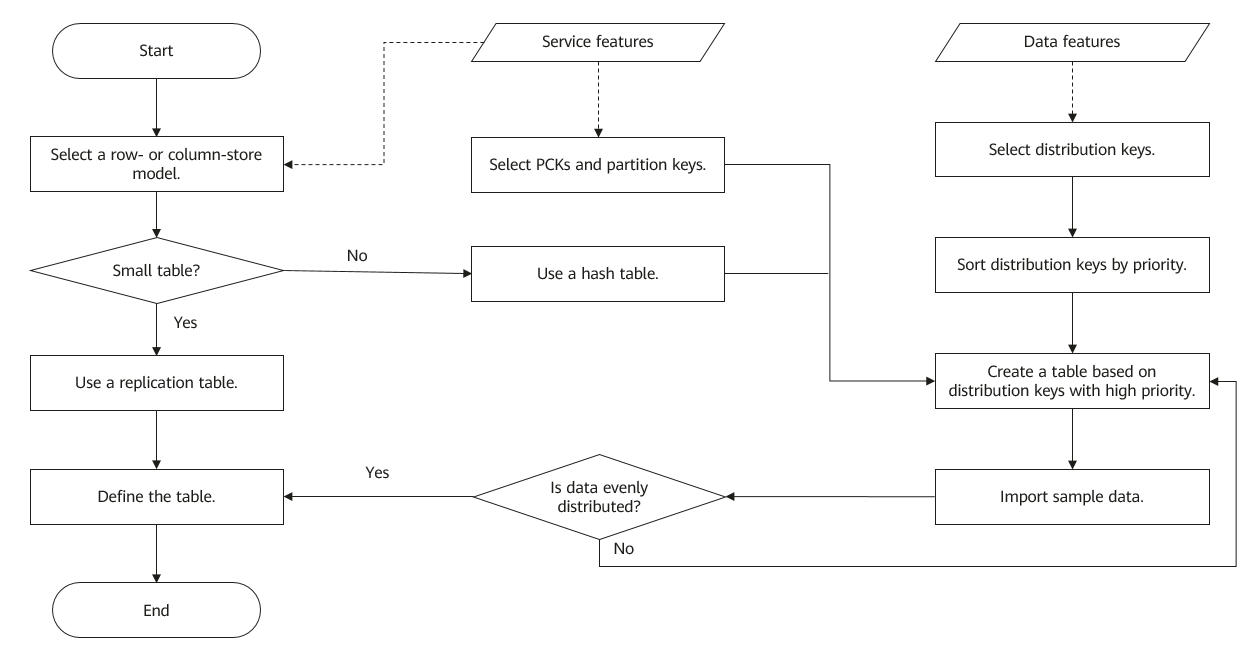Overview
In a distributed framework, data is distributed on DNs. Data on one or more DNs is stored on a physical storage device. To properly define a table, you must:
- Evenly distribute data on each DN to avoid the available capacity decrease of a cluster caused by insufficient storage space of the storage device associated with a DN. Select a proper distribution key to avoid data skew.
- Evenly assign table scanning tasks on each DN to avoid that a single DN is overloaded by the table scanning tasks. Specifically, do not select columns in the equivalent filter of a base table as the distribution key.
- Reduce the data volume scanned by using the partition pruning mechanism.
- Minimize random I/Os by using clustering.
- Avoid data shuffle to reduce the network pressure by selecting the join-condition or group by column as the distribution key.
The distribution key is the core for defining a table. Figure 1 shows the procedure of defining a table. The table definition is created during the database design and is reviewed and modified during the SQL statement optimization.
Feedback
Was this page helpful?
Provide feedbackThank you very much for your feedback. We will continue working to improve the documentation.See the reply and handling status in My Cloud VOC.
For any further questions, feel free to contact us through the chatbot.
Chatbot






